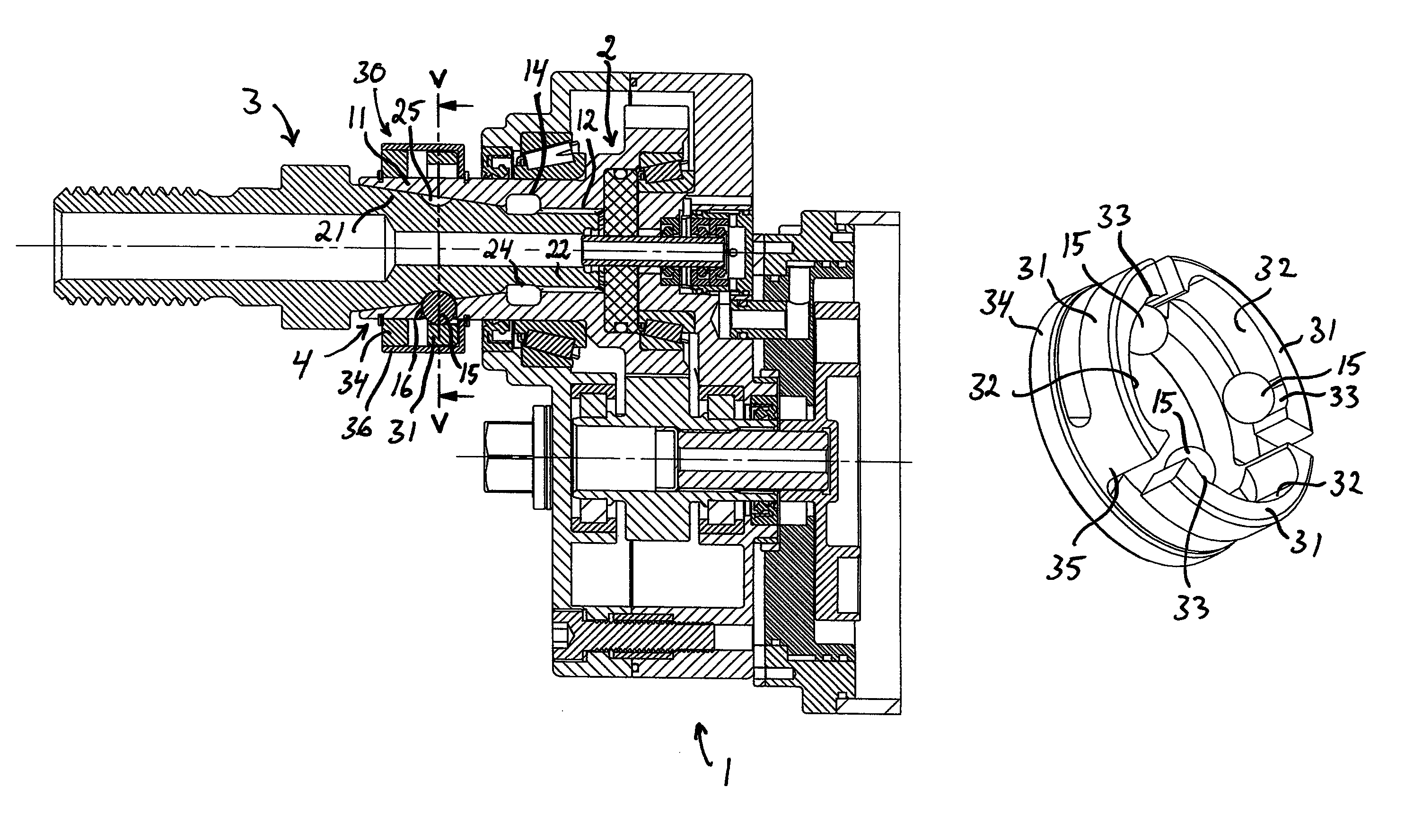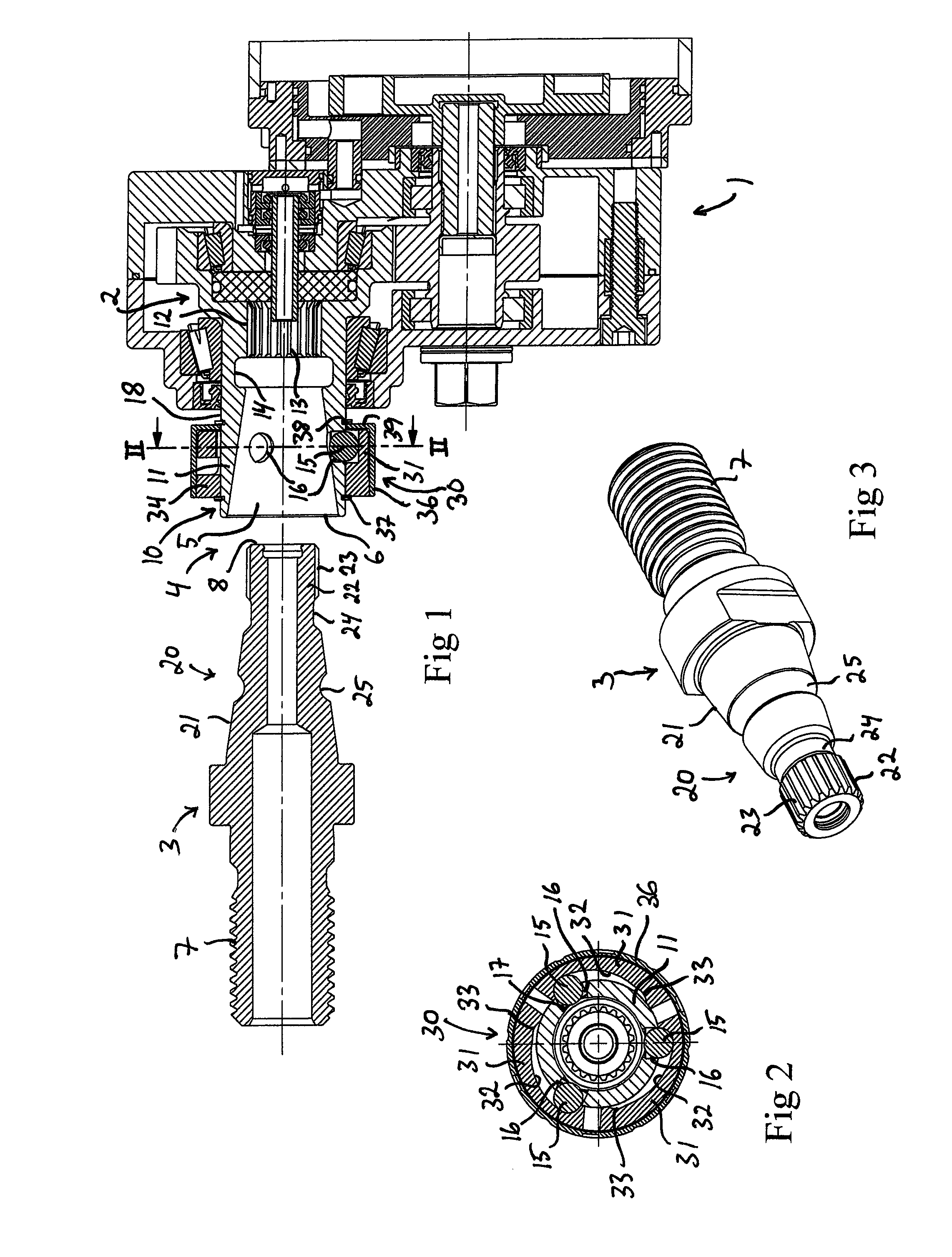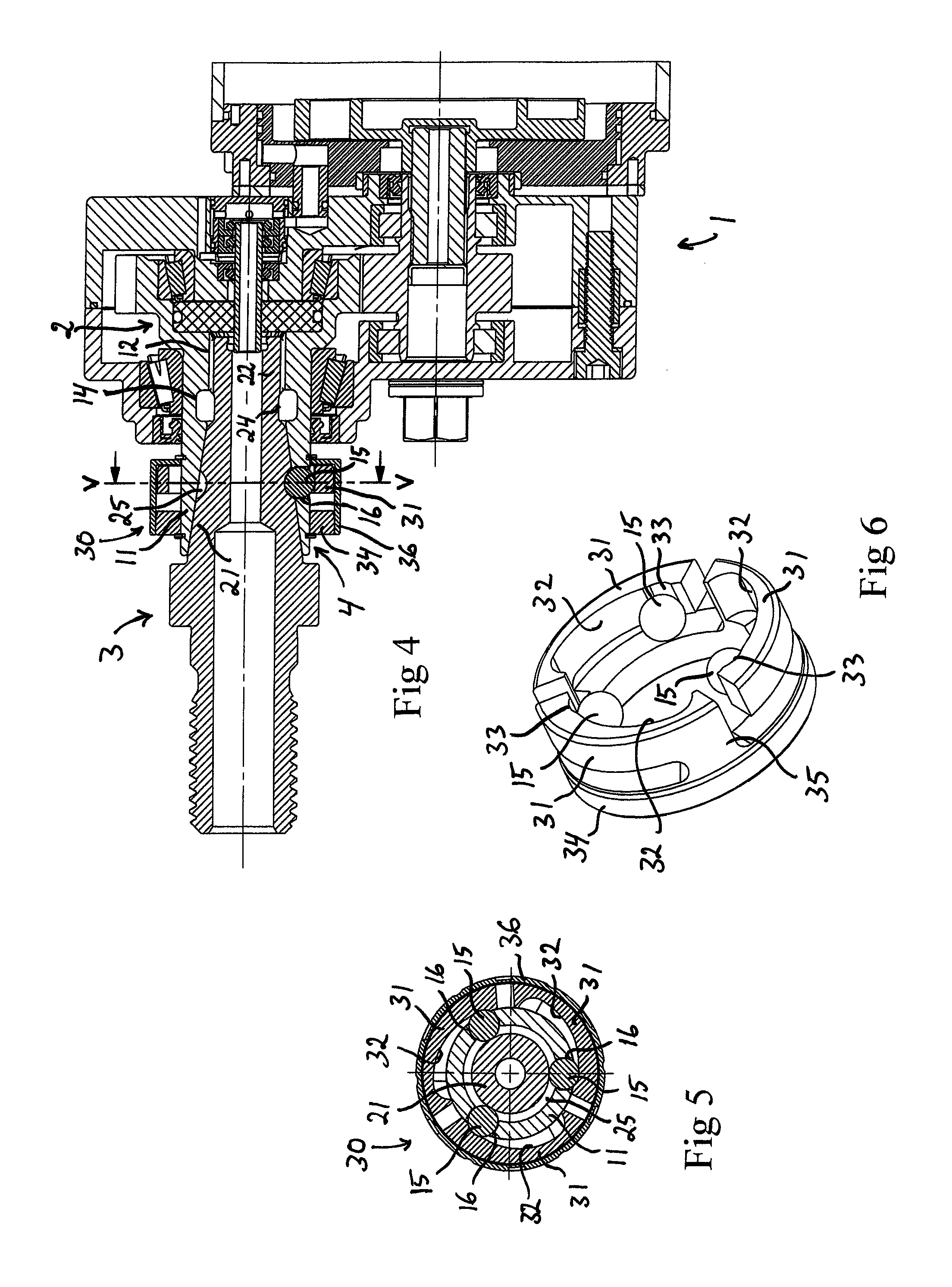Coupling device
a technology of coupling device and tool holder, which is applied in the direction of sleeve/socket joint, turning apparatus, stone-like material working apparatus, etc., can solve the problems of time-consuming and labor-intensive to secure the tool holder, difficult to later unscrew the tool holder from the spindle, and question run the risk of being damaged
- Summary
- Abstract
- Description
- Claims
- Application Information
AI Technical Summary
Benefits of technology
Problems solved by technology
Method used
Image
Examples
Embodiment Construction
[0027]FIG. 1 shows a part of a machining machine 1 with an output shaft in the form of a spindle 2 and a tool holder 3, which is connectable to the spindle. The spindle 2 is rotatably mounted and arranged to be rotated under the effect of a drive motor (not shown) of the machining machine. The tool holder 3 and the spindle 2 are connectable to each other by means of a coupling device 4 according to the present invention. The spindle 2 is hollow and provided with a recess 5 which extends axially into the spindle 2 from an outwards facing opening 6 at the outer end of the spindle.
[0028]The coupling device 4 comprises a female-shaped coupling part 10 which is fixedly connected to the spindle 2, and a corresponding male-shaped coupling part 20 which is fixedly connected into the tool holder 3. The female-shaped coupling part 10 is provided with an internally cone-shaped section 11. The male-shaped coupling part 20 is provided with a corresponding externally cone-shaped section 21, which...
PUM
| Property | Measurement | Unit |
|---|---|---|
| axial displacement | aaaaa | aaaaa |
| concave shape | aaaaa | aaaaa |
| torque | aaaaa | aaaaa |
Abstract
Description
Claims
Application Information
 Login to View More
Login to View More - R&D
- Intellectual Property
- Life Sciences
- Materials
- Tech Scout
- Unparalleled Data Quality
- Higher Quality Content
- 60% Fewer Hallucinations
Browse by: Latest US Patents, China's latest patents, Technical Efficacy Thesaurus, Application Domain, Technology Topic, Popular Technical Reports.
© 2025 PatSnap. All rights reserved.Legal|Privacy policy|Modern Slavery Act Transparency Statement|Sitemap|About US| Contact US: help@patsnap.com



